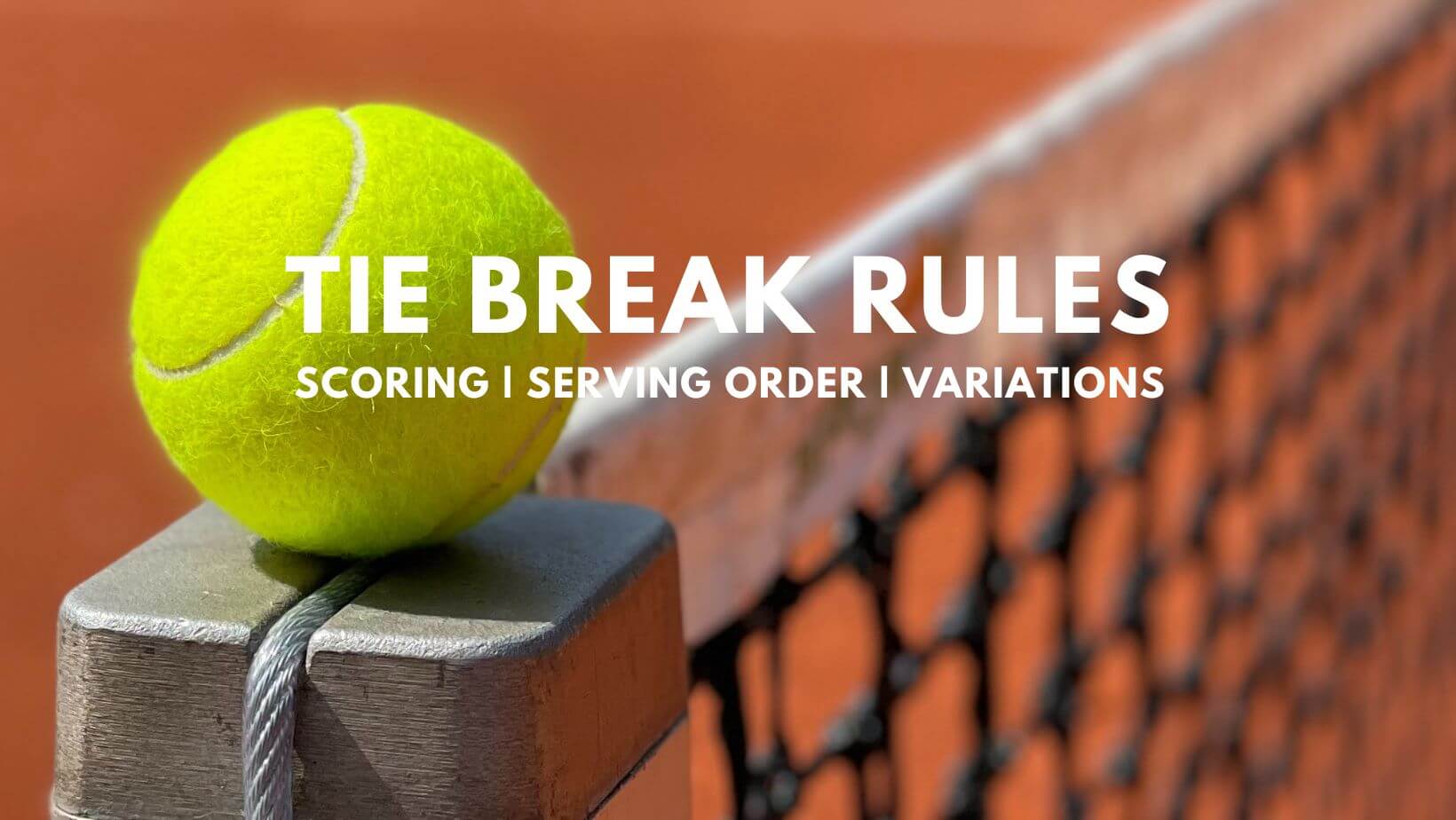Tiebreak Format and Rules

Tennis tiebreak rules – A tiebreak is a sudden-death playoff format used in tennis to determine the winner of a set that is tied at 6-6. It is played as a mini-game within the set, with the winner being the first player or team to reach seven points with a margin of at least two points.
Tennis tiebreak rules, often used in crucial moments, add an extra layer of intensity to the game. With its unique scoring system and sudden-death format, a tiebreak can turn the tide of a match. Carlos Alcaraz , one of the rising stars in tennis, has showcased his prowess in tiebreaks, demonstrating the mental fortitude and resilience required to succeed in these high-pressure situations.
As the rules dictate, a tiebreak continues until one player gains a two-point advantage, adding an element of nail-biting suspense to the court.
Serving and Scoring
The tiebreak begins with a coin toss to determine which player serves first. The server alternates sides every two points, with the first point served from the deuce court (right-hand side) and the second point from the ad court (left-hand side). Points are scored using the same scoring system as in regular tennis, with points awarded for hitting the ball into the opponent’s court and earning a return that cannot be reached.
Winning the Tiebreak, Tennis tiebreak rules
The first player or team to reach seven points with a margin of at least two points wins the tiebreak. If the score reaches 6-6, the server serves an extra point. This continues until one player or team wins by two points.
Example
Consider a tiebreak situation where Player A is serving and Player B is receiving. Player A wins the first point, followed by Player B winning the next two points. The score is now 1-2 in favor of Player B. Player A then wins the next four points, making the score 5-2. Player B wins the next point, making it 5-3. Player A wins the next two points, reaching seven points with a margin of at least two points, and wins the tiebreak.
Tennis tiebreak rules are a unique set of regulations designed to break deadlocks in matches. The rules stipulate that a tiebreak is played when the score reaches 6-6 in a set, and the player who wins the tiebreak wins the set.
The format of a tiebreak is a first-to-seven points game, with the player who reaches seven points first winning the tiebreak by a margin of two points. It’s worth noting that Carlos Alcaraz , the rising star of tennis, has showcased his remarkable skills in tiebreaks, often using his powerful forehand and exceptional court coverage to secure crucial victories.
Strategies and Tactics in Tiebreaks: Tennis Tiebreak Rules

Tiebreaks are a crucial part of tennis, often deciding the outcome of a close set. Players employ various strategies and tactics to gain an advantage during a tiebreak. These strategies involve shot selection, positioning, and mental preparation.
Aggressive serving is a common strategy in tiebreaks. Players aim to hit powerful serves that are difficult to return, putting pressure on their opponents. Conservative returning, on the other hand, involves playing safe and returning the ball deep into the court, forcing the opponent to make an error.
Shot Selection
Shot selection is crucial in tiebreaks. Players may opt for high-risk, high-reward shots such as drop shots or lobs to catch their opponents off guard. Others may prefer to play consistently, hitting deep groundstrokes and avoiding unforced errors.
Positioning
Positioning is also important. Players can position themselves closer to the net to put pressure on their opponents with volleys or stay back and cover the court more effectively.
Mental Preparation
Mental preparation is essential for success in tiebreaks. Players need to stay focused, composed, and confident under pressure. Nerves and anxiety can affect performance, so it’s important to have a positive mindset and trust in one’s abilities.
Historical Significance and Notable Tiebreaks

The introduction of the tiebreak rule in tennis revolutionized the game, bringing more excitement and unpredictability to matches. The first tiebreak format was introduced in 1970 at the Wimbledon Championships, where it was used as a way to break deadlocks in the final set. Initially, the tiebreak was played as a 12-point game, with the first player to reach 7 points winning the tiebreak.
In 1975, the no-ad scoring system was introduced, which further influenced the way tiebreaks were played. The no-ad system eliminated the advantage rule, where a player who won the previous point served from the ad court. This change made it more difficult for players to hold serve in tiebreaks, leading to more frequent breaks of serve and more exciting matches.
Over the years, tiebreaks have played a significant role in determining the outcome of major tennis tournaments. Some of the most memorable tiebreaks include:
* The 1980 Wimbledon final between Bjorn Borg and John McEnroe, which featured a record-breaking 34-point tiebreak in the fourth set, won by McEnroe.
* The 2008 Wimbledon final between Roger Federer and Rafael Nadal, which featured a thrilling five-set match that was decided by a 9-7 tiebreak in the fifth set, won by Nadal.
* The 2019 Australian Open final between Novak Djokovic and Rafael Nadal, which featured a dramatic five-set match that was decided by a 7-5 tiebreak in the fifth set, won by Djokovic.
Tiebreaks have had a major impact on the game of tennis. They have made matches more exciting and unpredictable, and they have given players a chance to win matches even when they are behind in the score. Tiebreaks have also influenced player rankings, as players who are good at playing tiebreaks can gain an advantage over their opponents.